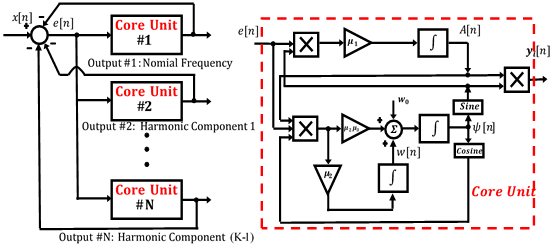Summary
A major challenge for future wide area measurement systems is how to efficiently monitor and control the power system, which requires accurate and real-time tracking of the phase, frequency, and Power Factor (PF) of the system. The presence of inter and sub harmonics, especially in a distribution system caused by widely used non-linear power loads, rectifiers, and inverters, will distort estimation of phase/frequency and make it difficult to track the voltage, current and frequency variations. The main objective of this project is to develop algorithms that can provide highly reliable estimation and fast tracking of all the harmonic components.
Description
The increasing deployment of residential renewables and an extensive use of nonlinear devices in the distribution system can produce undesirable harmonic distortions. Such distortions can severely impact phase/frequency estimation in power systems, especially distributed grid systems. For grid monitoring for instance, the presence of harmonic distortions can degrade the performance of PMUs for tracking voltage, current, and frequency variations. Therefore, awareness and identification of all the harmonic spectral components, such as inter-harmonic and sub- harmonic, can greatly enhance the power system’s reliability, hence reducing harm to the system. While there is a great deal of effort involved in estimating the harmonics, study of inter-harmonics and sub-harmonics is still in its infancy. This is mainly due to the fact that it is hard to pinpoint inter-harmonics and sub-harmonics frequencies since they are discrete and not integer multiples of the fundamental frequency. In the search for a viable solution, we recognized that this would require developing two-stage processing to identify and track the harmonics, sub-harmonics and inter-harmonics (shown in Fig. 4). Our two-stage solution consists of a subspace-based estimation method to detect and identify all harmonic components, followed by a low-complexity fast tracking algorithm to monitor frequency variations of voltage and current signals in real-time and with great accuracy. Our results indicate that the proposed approach can provide highly reliable estimation and fast tracking of the harmonic components.


Major Accomplishments
The outcome of this research has been published in The IEEE Transactions on Smart Grid, entitled: A Fast Recursive Algorithm For Spectrum Tracking in Power Grid Systems .

